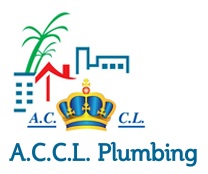Rainwater harvesting is the process of collecting and storing rainwater for future use, reducing reliance on municipal water supplies and promoting sustainable living. As the world grapples with water scarcity and environmental degradation, rainwater harvesting offers a simple yet effective solution. In this article, we’ll explore the benefits of rainwater harvesting and provide a step-by-step guide on how to install a rainwater harvesting system.
Benefits of Rainwater Harvesting
Rainwater harvesting offers numerous benefits, including:
– Reduced Water Bills: By collecting and using rainwater for non-potable purposes, you can significantly lower your water bills.
– Conservation of Groundwater: Rainwater harvesting reduces the demand on groundwater, helping to preserve this precious resource for future generations.
– Stormwater Management: Rainwater harvesting systems can help mitigate stormwater runoff, reducing the risk of flooding and erosion.
– Sustainable Water Source: Rainwater is a natural, chemical-free water source ideal for irrigation, toilet flushing, and other non-potable uses.
Installation Process for Rainwater Harvesting Systems
Installing a rainwater harvesting system is a straightforward process that requires careful planning and execution. Here’s a step-by-step guide:
– Determine Your Water Needs: Calculate your water requirements to determine the size of your storage tank and catchment area.
– Select a Catchment Surface: Choose a suitable catchment surface, such as a roof, to collect rainwater.
– Install a Conveyance System: Direct rainwater from the catchment area to the storage tank using pipes and gutters.
– Choose a Storage Tank: Select a tank that’s sized to meet your water needs and install it in a suitable location.
– Add Filtration and Treatment: Install filters and treatment systems to ensure the collected rainwater is safe for use.
– Connect the System: Connect the storage tank to your irrigation system, toilet, or other non-potable uses.³
Types of Rainwater Harvesting Systems
There are several types of rainwater harvesting systems, including:
– Gravity-Fed Systems: Simple systems that rely on gravity to collect and distribute rainwater.
– Pumped Systems: Systems that use pumps to distribute rainwater to areas of high elevation or pressure.
– Indirect Gravity Systems: Systems that use gravity to distribute rainwater from a storage tank located at a higher elevation.
Cost Considerations
The cost of installing a rainwater harvesting system varies depending on the size and complexity of the system. Basic setups can cost a few hundred pounds, while more advanced systems can cost thousands. However, the long-term savings and environmental benefits often outweigh the initial investment.
In conclusion, rainwater harvesting is a simple and effective way to conserve water, reduce your water bills, and promote sustainable living. By following the installation process outlined above, you can create a reliable and efficient rainwater harvesting system that meets your needs and benefits the environment.

